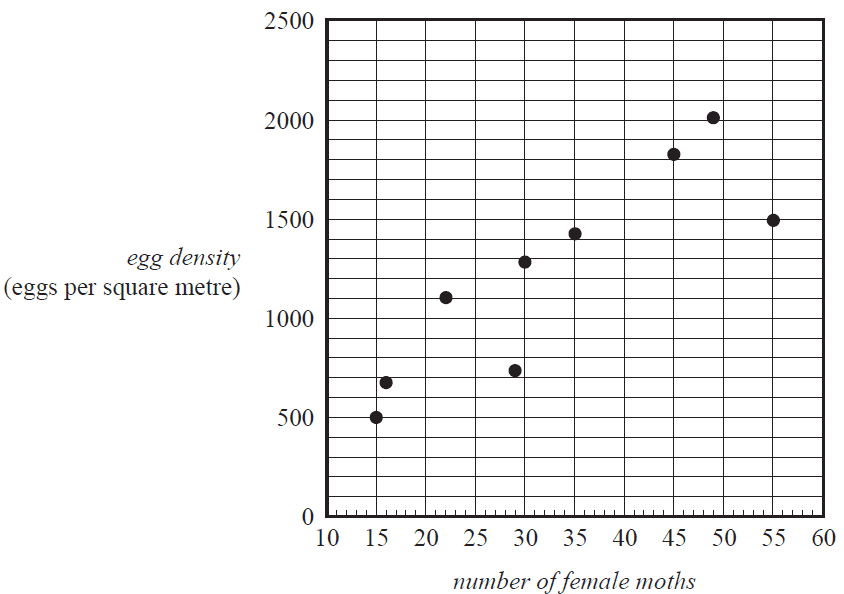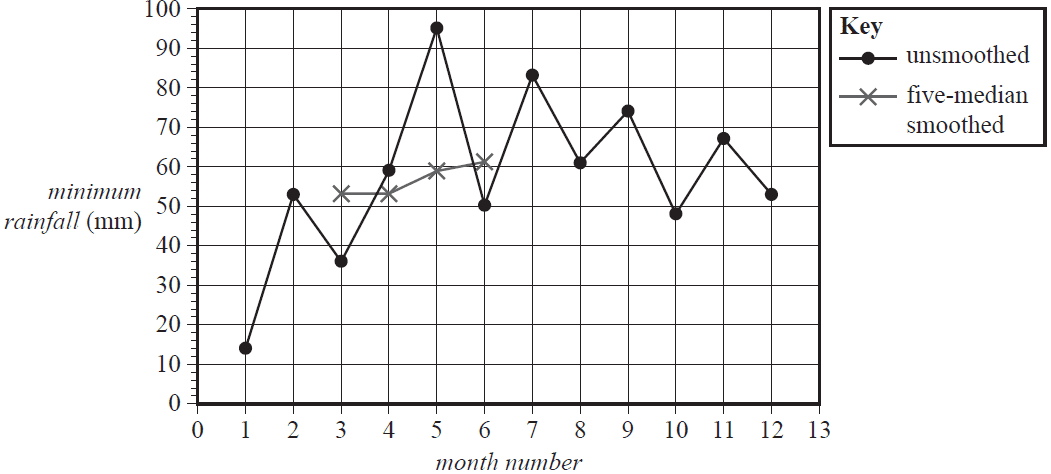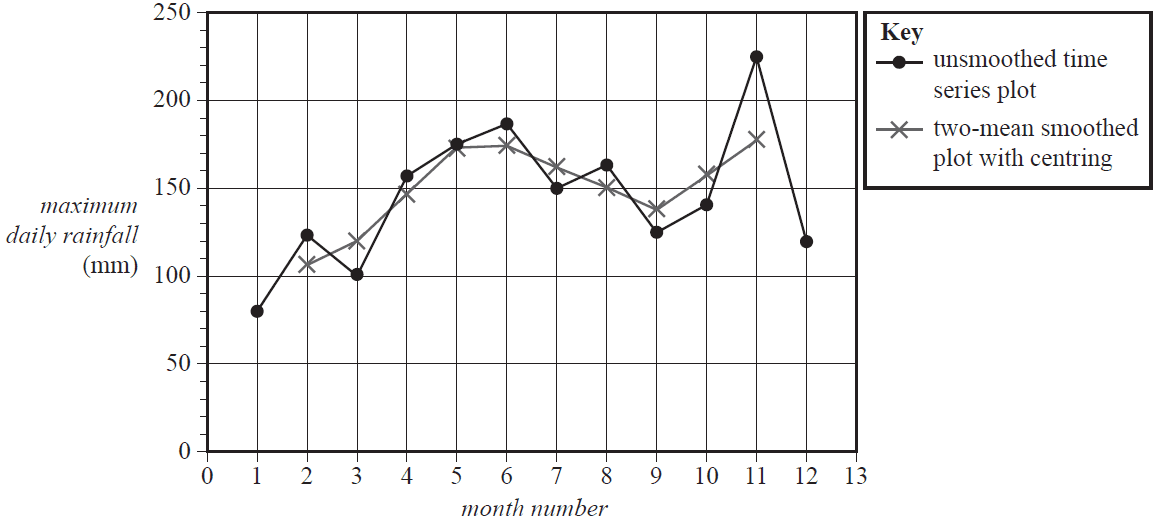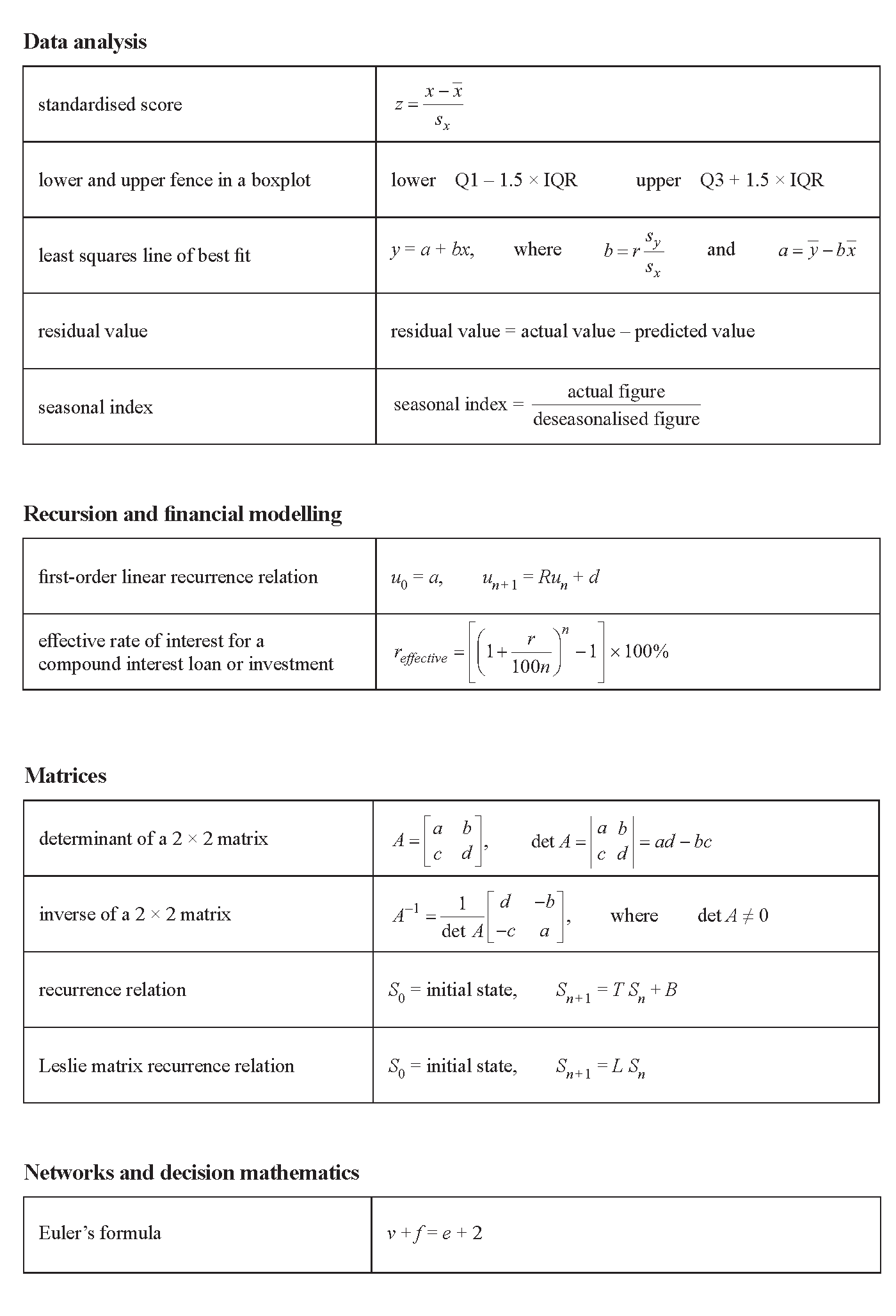VCE General Maths Data Analysis 2017 Mini Test 3
VCAA General Maths Exam 2
This is the full VCE General Maths Exam with worked solutions. You can also try Mini-Tests, which are official VCAA exams split into short tests you can do anytime.
Number of marks: 10
Reading time: 2.5 minutes
Writing time: 15 minutes
Instructions
• Answer all questions in the spaces provided.
• Write your responses in English.
• In all questions where a numerical answer is required, you should only round your answer when instructed to do so.
• Unless otherwise indicated, the diagrams in this book are not drawn to scale.
Data analysis - 2017 - Exam 2 (Part 3)
The number of male moths caught in a trap set in a forest and the egg density (eggs per square metre) in the forest are shown in the table below.
| Number of male moths | 35 | 37 | 45 | 49 | 65 | 74 | 77 | 86 | 95 |
| Egg density (eggs per square metre) |
471 | 635 | 664 | 997 | 1350 | 1100 | 2010 | 1640 | 1350 |
a. Determine the equation of the least squares line that can be used to predict the egg density in the forest from the number of male moths caught in the trap.
Write the values of the intercept and slope of this least squares line in the appropriate boxes provided below.
Round your answers to one decimal place. 2 marks
egg density = + × number of male moths
b. The number of female moths caught in a trap set in a forest and the egg density (eggs per square metre) in the forest can also be examined.
A scatterplot of the data is shown below.

The equation of the least squares line is
egg density = 191 + 31.3 × number of female moths
i. Draw the graph of this least squares line on the scatterplot on page 6. 1 mark
(Answer on the scatterplot on page 6.)
ii. Interpret the slope of the regression line in terms of the variables egg density and number of female moths caught in the trap. 1 mark
iii. The egg density is 1500 when the number of female moths caught is 55.
Determine the residual value if the least squares line is used to predict the egg density for this number of female moths. 1 mark
iv. The correlation coefficient is \(r = 0.862\)
Determine the percentage of the variation in egg density in the forest explained by the variation in the number of female moths caught in the trap.
Round your answer to one decimal place. 1 mark
The time series plot below shows the minimum rainfall recorded at the weather station each month plotted against the month number (1 = January, 2 = February, and so on).
Rainfall is recorded in millimetres.
The data was collected over a period of one year.

a. Five-median smoothing has been used to smooth the time series plot above. The first four smoothed points are shown as crosses (×). Complete the five-median smoothing by marking smoothed values with crosses (×) on the time series plot above. 2 marks
The maximum daily rainfall each month was also recorded at the weather station.
The table below shows the maximum daily rainfall each month for a period of one year.
| Month | Jan. | Feb. | Mar. | Apr. | May | June | July | Aug. | Sep. | Oct. | Nov. | Dec. |
| Month number | 1 | 2 | 3 | 4 | 5 | 6 | 7 | 8 | 9 | 10 | 11 | 12 |
| Maximum daily rainfall (mm) | 79 | 123 | 100 | 156 | 174 | 186 | 149 | 162 | 124 | 140 | 225 | 119 |
The data in the table has been used to plot maximum daily rainfall against month number in the time series plot below.

b. Two-mean smoothing with centring has been used to smooth the time series plot above. The smoothed values are marked with crosses (×). Using the data given in the table, show that the two-mean smoothed rainfall centred on October is 157.25 mm. 2 marks
End of Multiple-Choice Question Book
VCE is a registered trademark of the VCAA. The VCAA does not endorse or make any warranties regarding this study resource. Past VCE exams and related content can be accessed directly at www.vcaa.vic.edu.au
